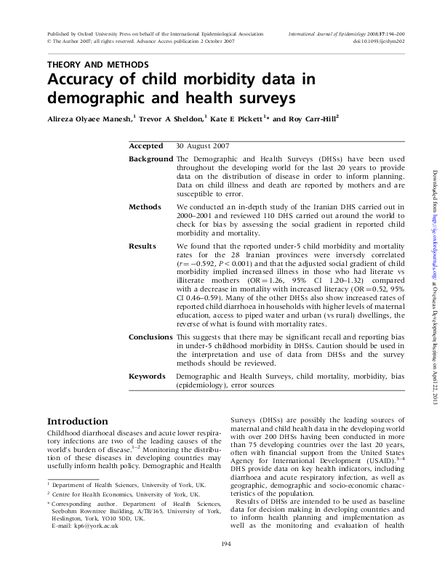
Demographic and Health Surveys (DHSs) have been used throughout the developing world for the last 20 years to provide data on the distribution of disease in order to inform planning. Data on child illness and death are reported by mothers and are susceptible to error. This in-depth study of the 2000–2001 Iranian DHS and review of 110 DHSs around the world checked for bias by assessing the social gradient in reported child morbidity and mortality. Researchers found that the reported under-5 child morbidity and mortality rates for the 28 Iranian provinces were inversely correlated and that the adjusted social gradient of child morbidity implied increased illness in those who had literate vs illiterate mothers, compared with a decrease in mortality with increased literacy. Many of the other DHSs also showed increased rates of reported child diarrhoea in households with higher levels of maternal education, access to piped water, and urban (vs rural) dwellings, the reverse of what was found with mortality rates. This suggests that there may be significant recall and reporting bias in under-5 childhood morbidity in DHSs. Caution should be used in the interpretation and use of data from DHSs, and the survey methods should be reviewed.